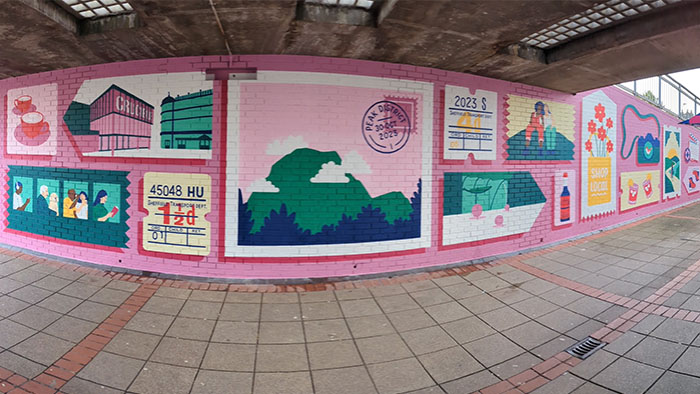The HavObservatoriet (sea observatory), created by Autogena and collaborator Joshua Portway, is a 3m high and 7m diameter circular steel building, which contains a giant panoramic screen displaying a real-time simulation of ocean waves in the sea surrounding Denmark.
The installation is a permanent sculptural display in a new Klimapark (Climate Park) in Vejle, Denmark and was commissioned by the Vejle Municipality and the Danish Arts Council (Statens Kunstfond).
It has been created as a meditative space within the Climate Park, with the movement of the waves a realistic representation of what you would see if you were drifting out to sea.
The Klimapark is a major Danish landscaping programme in the city of Vejle to prevent the city from flooding with the rising sea level.
Professor Autogena said: “The ocean waves that surround you in the observatory are visualisations of the latest ocean forecasts from the European Centre for Medium-range Weather Forecasts (ECMWF). We convert the spectral data from these forecasts into an animated simulation of the ocean surface, and then render this surface using a non-photorealistic particle-based rendering system.
Every few minutes the screen changes to a new semi-random location around the coast of Denmark. Sometimes it will be showing 10m high storm surges from the North Sea, sometimes the tranquil waves from the east coast of Jutland. The viewer is surrounded by the movements of the ocean as millions of individual waves of different sizes moving in different directions
Jean Bidlot, Senior Scientist at Research Department, Earth System Modelling Section, Coupled Processes Group at European centre for Medium Range Weather Forecasts (ECMWF), said: "I have wondered for quite a while now whether we could use the full information instead to produce images of how the sea might look like. I know that in principle the random representation sea surface elevation can be reconstructed using the spectrum. And so, when I was approached by Josh and Lise, I got quite enthusiastic at the idea that we could just do that.
“Obviously, they have an artistic view on this, which is great, but at the core of their system, there is true science that has been used to create a realistic realisation of how the waves might look like. I can envisage that comparing these images with reality might help us understand even more about the intricate processes that are occurring when waves are present at the sea surface.”
HavObservatoriet is the first of a series of Danish Arts Foundation commissioned artworks in Vejle, with a focus on water as a future challenge and potential.
More information on the development of HavObservatoriet is available on Lise Autogena’s website.


